Indian Clubs V Juggling Pins
Today, people often confuse Indian Clubs with Juggling Pins, due to their similarity in appearance. In fact, the two share a mutual ancestry, and a historical connection that goes back more than one hundred years.

Ben Miller
Indian Clubs V Juggling Pins. A guest blog post and video created by Ben Miller, who is a Screenwriter, Filmmaker, Author and Classical fencer.
Ancient Art Forms
Indian Club swinging is an ancient exercise and art form that was first brought to the west during the early nineteenth century. In both Europe and America, club-swinging continued to evolve and became a popular and iconic physical culture exercise, practised by soldiers, sailors, athletes, women, and children for its health benefits and its artistic value, as well as for amusement.
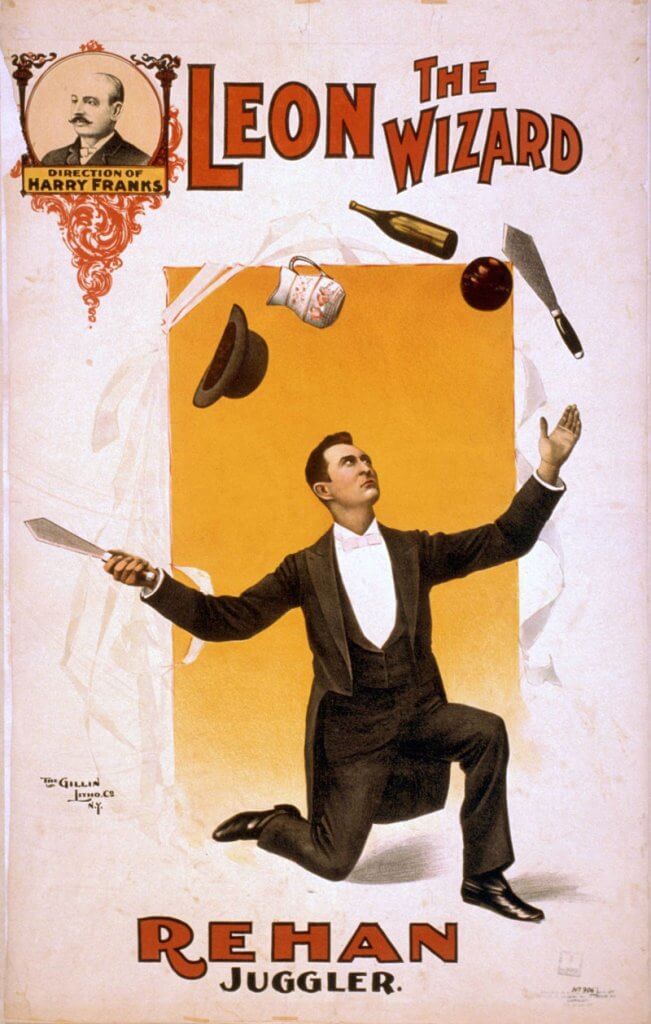
Juggling is an Ancient Art Form
Juggling is also an ancient art form, and up until the late nineteenth century, did not use pins or clubs, but instead used balls, sticks, swords, knives, torches, and other diverse implements ranging from banjos to chairs. However, towards the end of the 19th century, some Indian club swingers began juggling their clubs, or jugglers began integrating Indian clubs in their acts—it’s not certain exactly how it first happened.
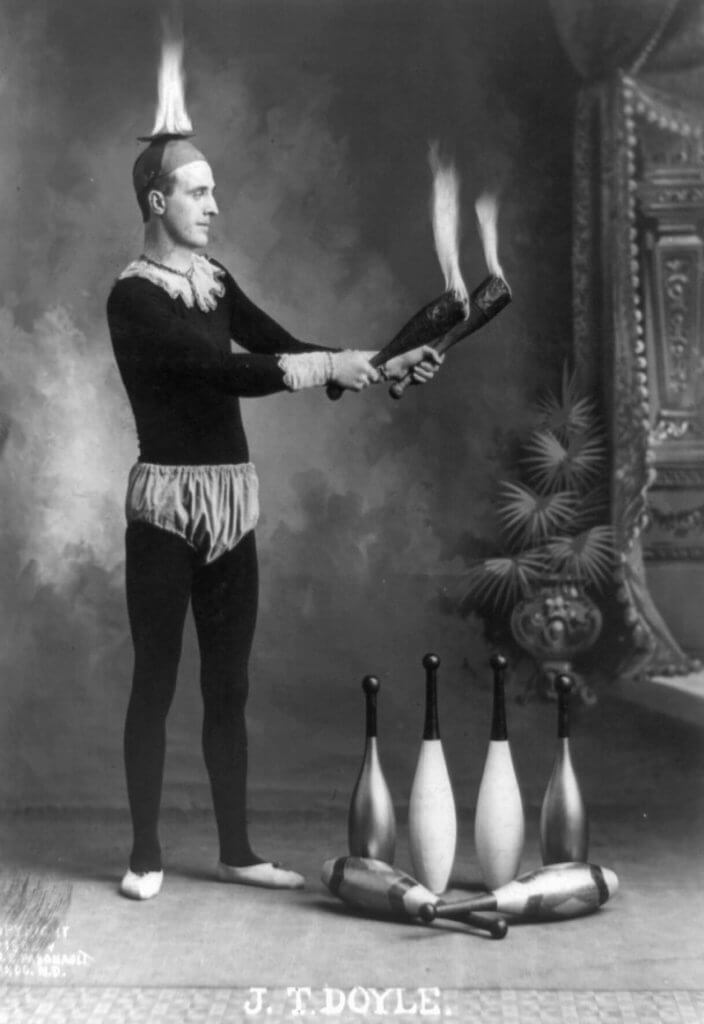
Parlour Athletes
One of the first performers that we know of to do this was James DeWitt Cook of Ohio, a “parlour athlete” and champion club-swinger dubbed “The King of Clubs” who juggled Indian clubs during the 1870s and 1880s. In 1885, Cooke reportedly gave a “beautiful and artistic manipulation of Indian Clubs, juggling three clubs at the same time.”
The Greatest Novelty of the Age

Another such performer was Charles H. Hoey, of Natick, Massachusetts, who, around 1880, began performing throughout America in a club-swinging and juggling act, loftily billing himself as “the Greatest Novelty of the Age.” Reportedly, Hoey was the first juggler able to juggle four Indian clubs at the same time. However, as he was not able to catch the clubs when finished, his act ended with the curtains closing on him while he was still juggling.
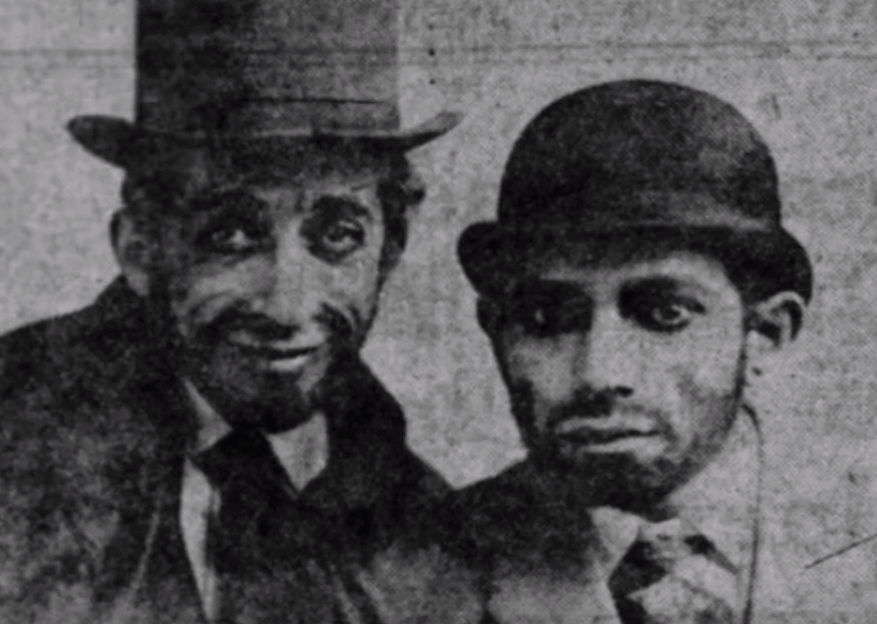
Photo Credit:- David Cain’s Juggling Museum
Hoey’s Challenge
In 1881, Hoey publicly challenged anyone to face him in a juggling and club-swinging contest for prize money, stating:
“I hereby challenge any man in America to swing and juggle single, double, triple and quadruple Indian clubs for from $100 to $500 a side, in New York or Boston”
Is Juggling Legitimate Club Swinging?
The challenge was taken up by Gus Hill, then known as the Club Swinging champion of America. However, in newspapers, Hill publicly mocked Hoey’s juggling of small, light clubs, calling them “ten-pins”, and claimed that juggling had no place in Indian club-swinging whatsoever. Indeed, in previous contests, judges had been indecisive about whether juggling was considered legitimate club-swinging, and had handed out awards for them separately.
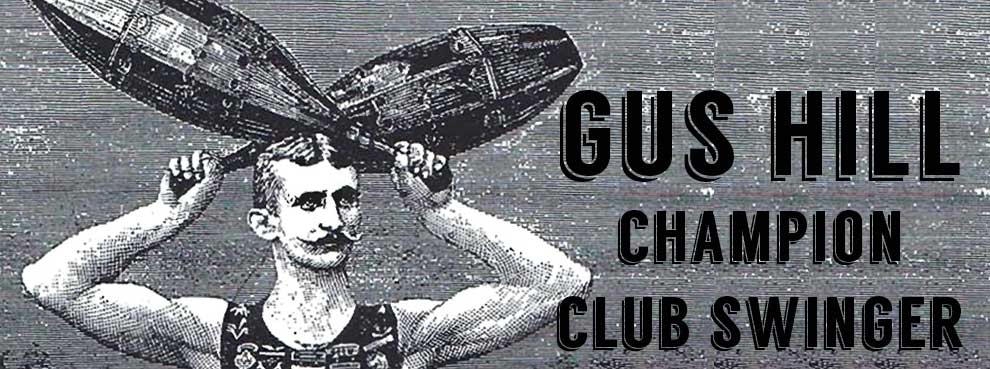
Indian Clubs V Juggling Pins
Hoey, however, now reportedly claimed that club-swinging was merely the “ABCs” of swinging, as opposed to the high and more difficult art of juggling. In response, Gus Hill offered to face Hoey in a club-juggling contest, but only on the following conditions:
“If Hoey wants to juggle Indian Clubs with me I will, on condition that he uses a pair of 20-pound clubs, they are to measure 32 inches long. For style, strength and execution; or I will swing Indian Clubs against him, he to do juggling with Indian Clubs and I to do swinging, the one doing the most movements and showing the best style to be declared the winner.
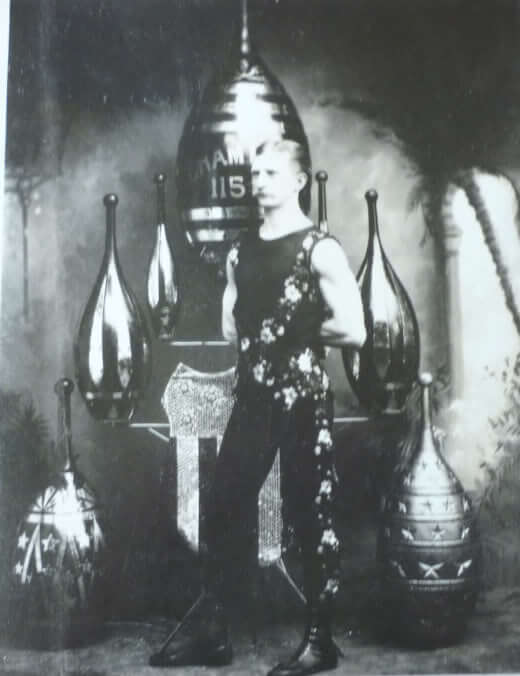
To Juggle or Fake up an Act
I will bet $300 that I can do more swinging movements than Hoey’s juggling and swinging combined. Now. I will leave it to any athlete in America, that if a man wants to swing clubs that he can swing hours and do different movements, and a man juggling clubs has not got brains enough to learn the complicated movements, and throws up swinging and learns to juggle or fake up an act. …I am always open to juggling heavy clubs from 20 to 40 pounds with any man in the world; also open to swing Indian Clubs against any man for from $500 to $1,000 a side…I will meet [Hoey] at any time to arrange a match. If he is afraid of swinging against me, I will back a female pupil of mine against him.”
The most Scientific and Graceful Ever Witnessed
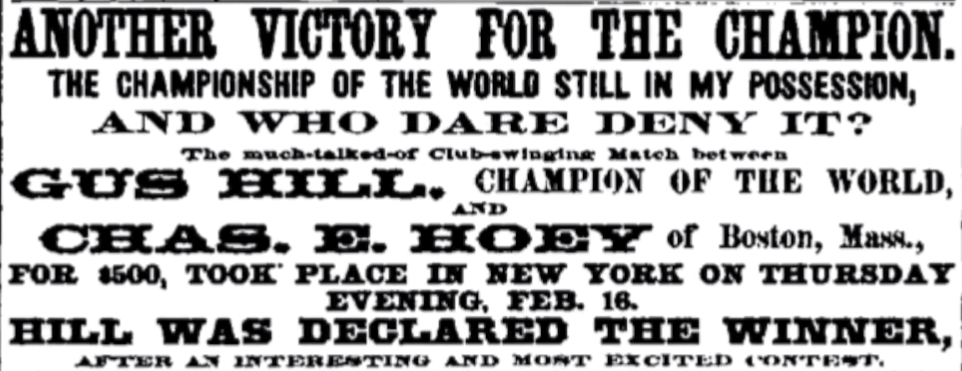
A match was eventually arranged, for February 16, 1882, before a packed New York City audience. Hoey performed first for twelve minutes and reportedly made a very good display. Gus Hill then swung 8-pound clubs, and after sixteen minutes, retired amid cheers, having made far many more motions than Hoey. Hill was judged the winner, and his swinging declared “the most scientific and graceful ever witnessed.”
Interestingly, despite the supposed rivalry between the two men, Hill and Hoey eventually partnered up in 1891, and toured the country together, performing a “juggling and club-swinging act.”
Again, in 1904, a now ageing Hill performed a club-swinging act in an event with James T. Powers, who performed a burlesque juggling act.
Juggling Banned from Competitions
However, following the outcome of the earlier 1881 contest between Hoey and Hill, juggling was no longer allowed to be a part of club-swinging contests. In 1886, Spalding’s Hand-Book of Sporting Rules declared that “Juggling shall not be considered as club swinging.”


Rule Number #5
And later, in his 1913 club textbook, British champion Tom Burrows stated that rule number 5 for club-swinging contests was: “No juggling or holding the clubs below the handles allowed.”
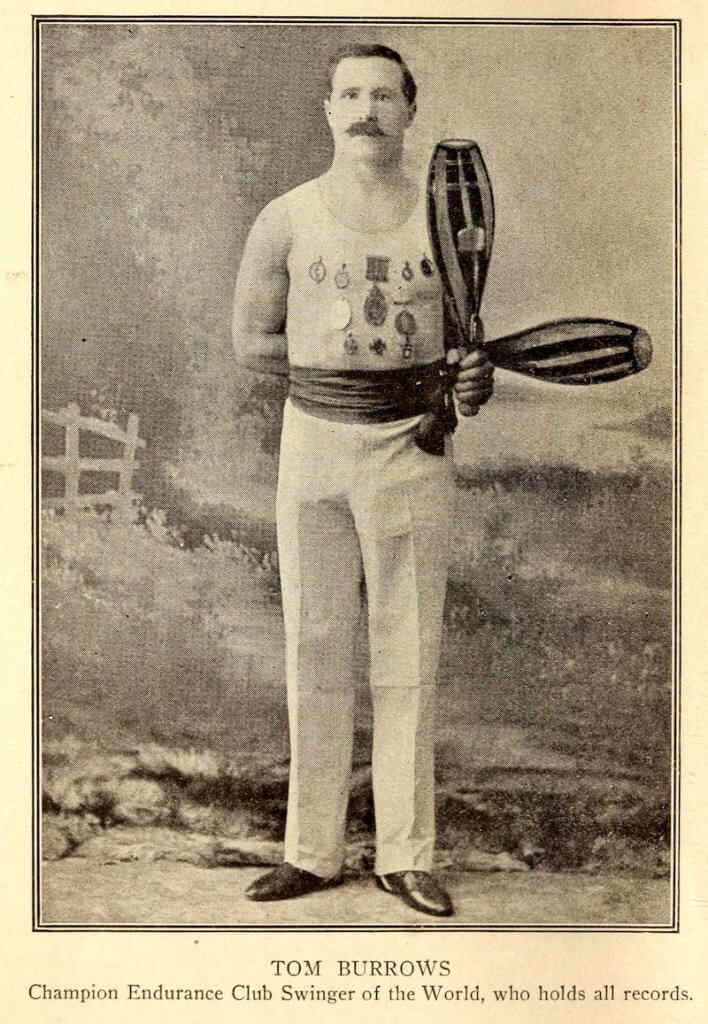
Jugglers began using Exhibition Indian Clubs
Nevertheless, jugglers continued to use Indian clubs in their performances. As they were not seeking to impress audiences with the weight of the clubs, jugglers began using Exhibition Indian Clubs. These were large, hollow, very light Indian clubs made by Spalding, the Narragansett Machine Company, and other manufacturers. These clubs were often adorned with thin brass plating or German silver embellishments to reflect the available light, and dazzle audiences. Although intended for club swinging exhibitions, these clubs became favourites among jugglers because of their lightness.

New Juggling Clubs
In the 1890s, jugglers began devising their own types of clubs. One of the first to do so was with great success was juggling performer Edward Van Wyck. Rather than hollowing out a single piece of wood, like an exhibition club, Van Wyck’s clubs were made in sections, with a hollow centre, and covered in canvas with foil decorations. They were lighter and easier to make than traditional hollow Indian Clubs. These were the first true “juggling clubs” mainly intended for that, and not for club-swinging.
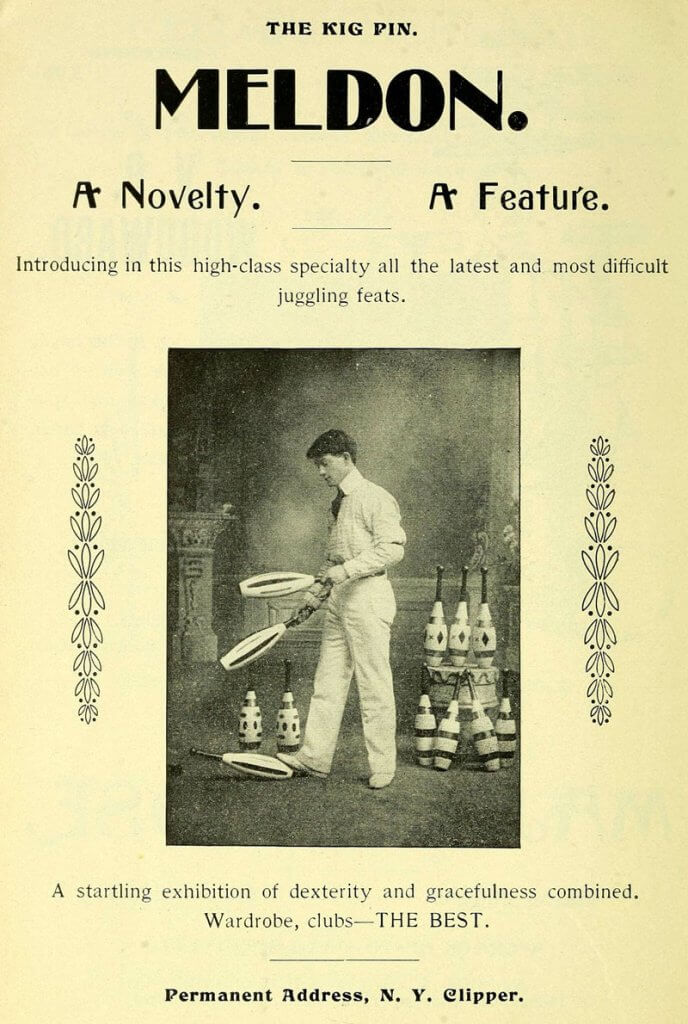
Basket Clubs
Wooden clubs were followed by “basket clubs,” made with wicker or basket-woven body, covered by linen, paper, or other thin material, which could be made even lighter and larger. In this picture of female jugglers, although the clubs look similar to Spalding exhibition clubs, if you look closely, you can see from the texture that these are actually thinly covered basket clubs. Additional designs utilising new materials followed, leading to the various types of juggling pins that we are familiar with today.


Cobbett & Jenkin’s Book
Some jugglers, however, continued to work with Indian clubs. Likewise, some Indian club-swingers still integrated a bit of “club throwing” or “club tossing” into their routines. Cobbett & Jenkins popular club-swinging text of 1893, widely reprinted, shows some of these techniques.
Indian Clubs V Juggling Pins
In 1900, Frank Miller, physical director of the YMCA in Dallas Texas, published a book on Indian club swinging and juggling, proving that some were still connecting the two practices. Miller’s book included chapters on large one-handed club juggling, two- and three-club juggling and balancing, and club juggling with a partner. Some balancing techniques similar to those shown in Miller’s text can still be seen in film footage from the early 20th century.



Early Film Footage
The following clip is the only early film footage we could find which mixes Indian club swinging, specifically the snake movements, and wrist circles, with juggling.
Many thanks to Ben Miller
I would like to thank Ben Miller for presenting his video called Indian Clubs and Juggling Pins and providing the photographs for this post.

